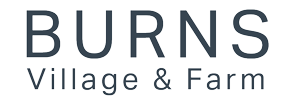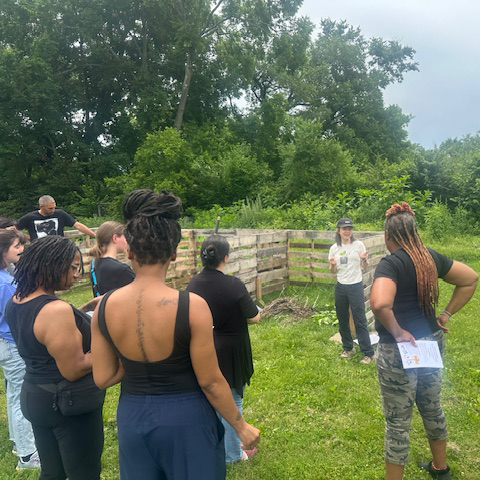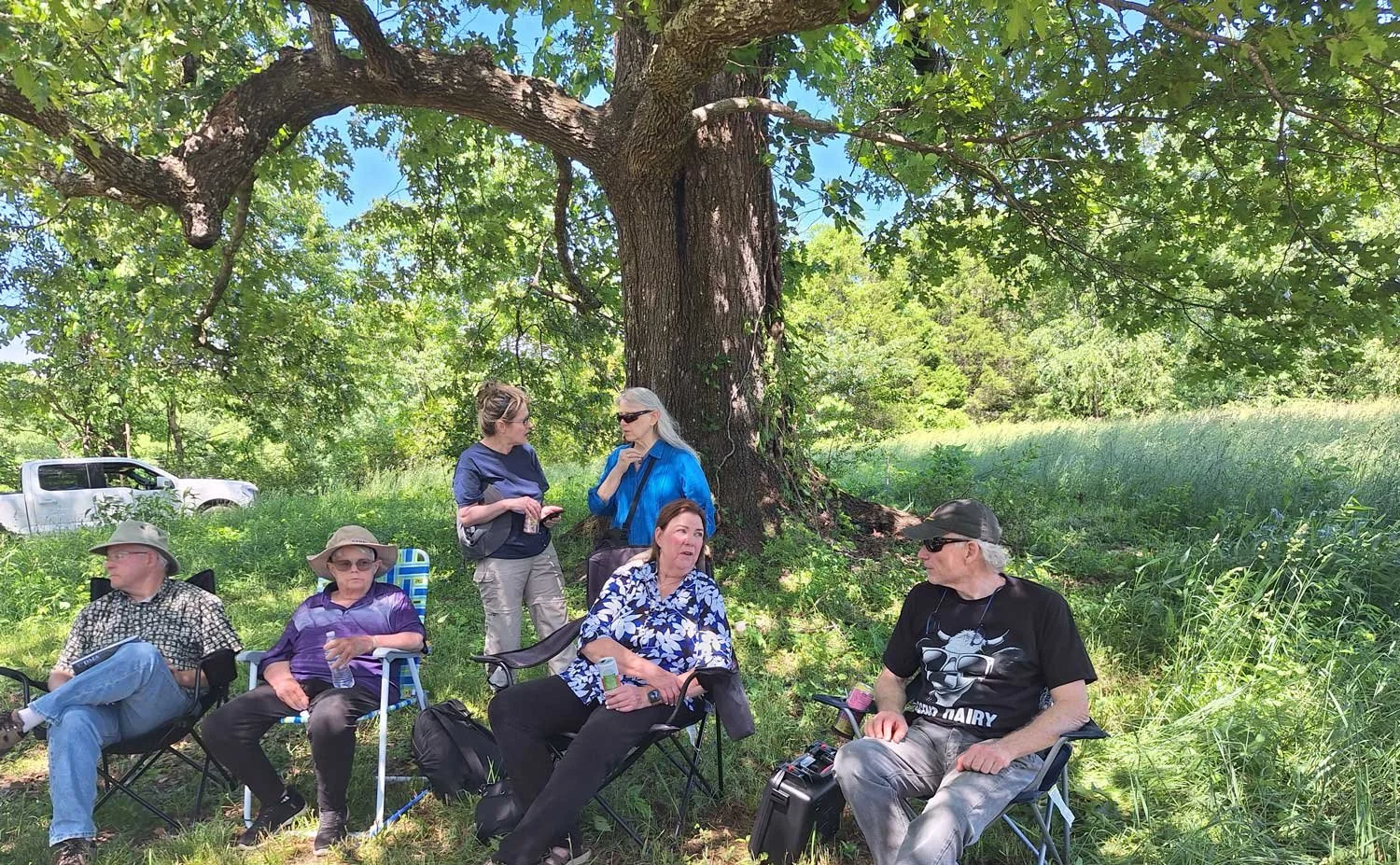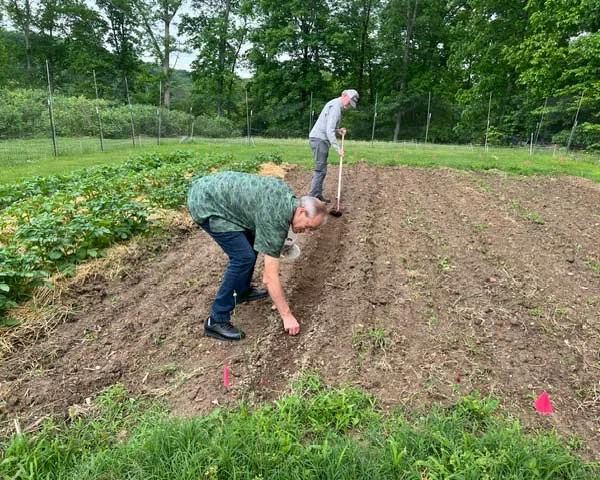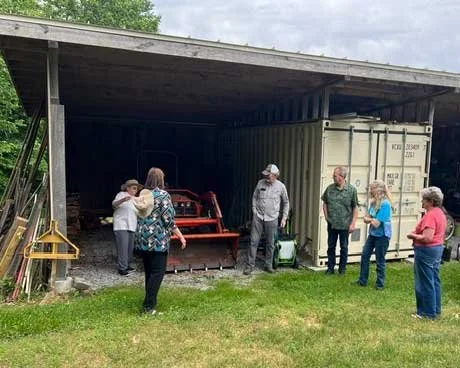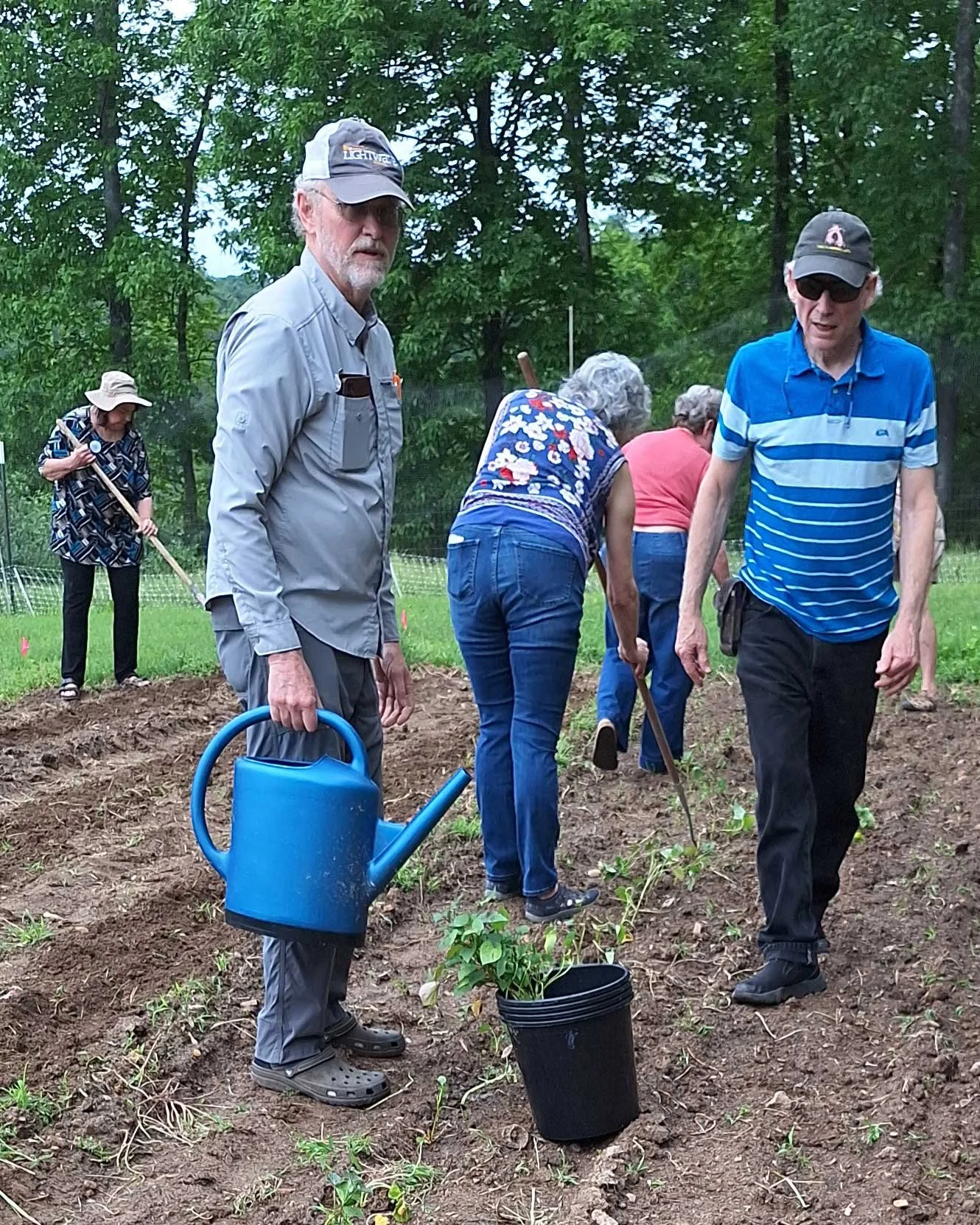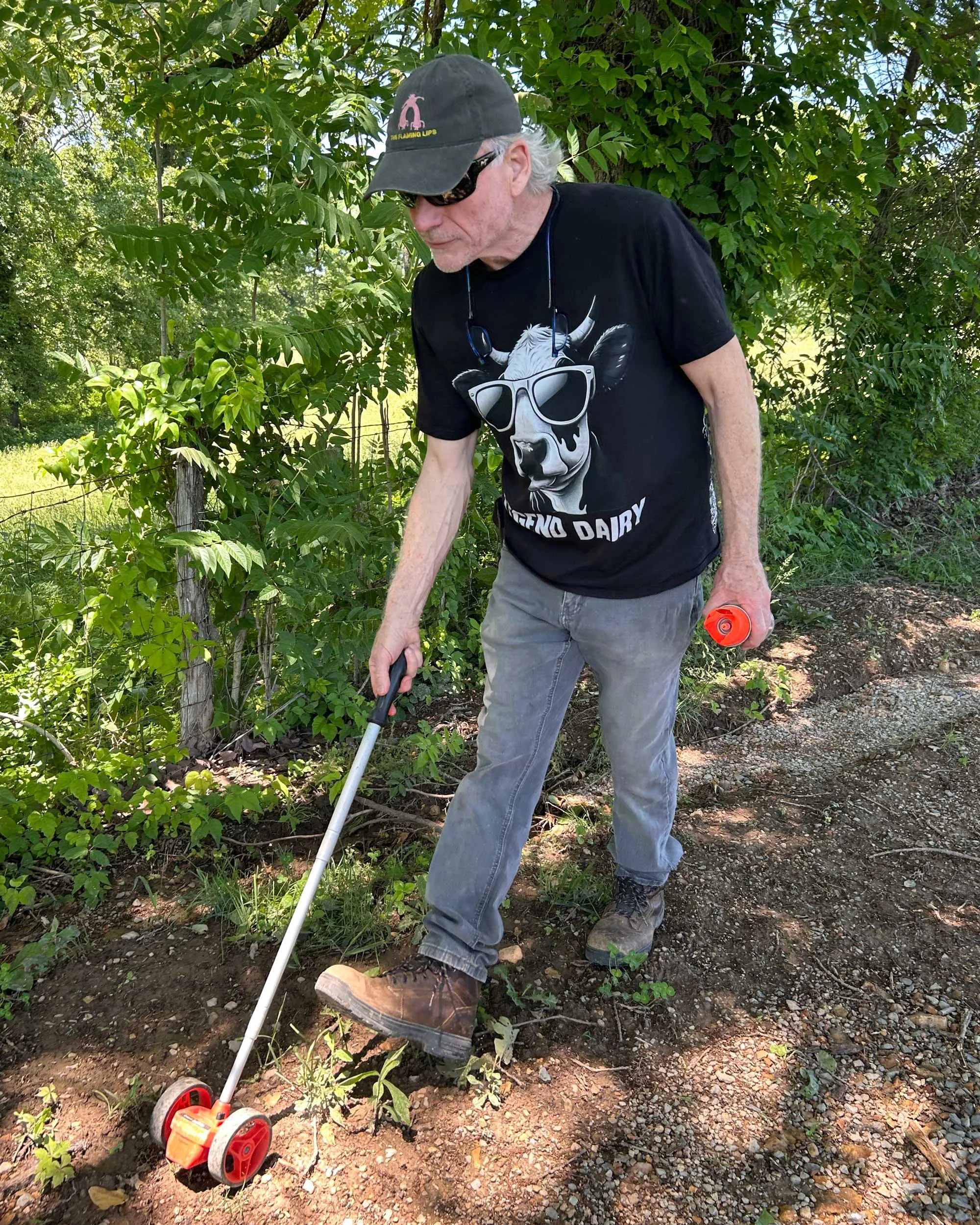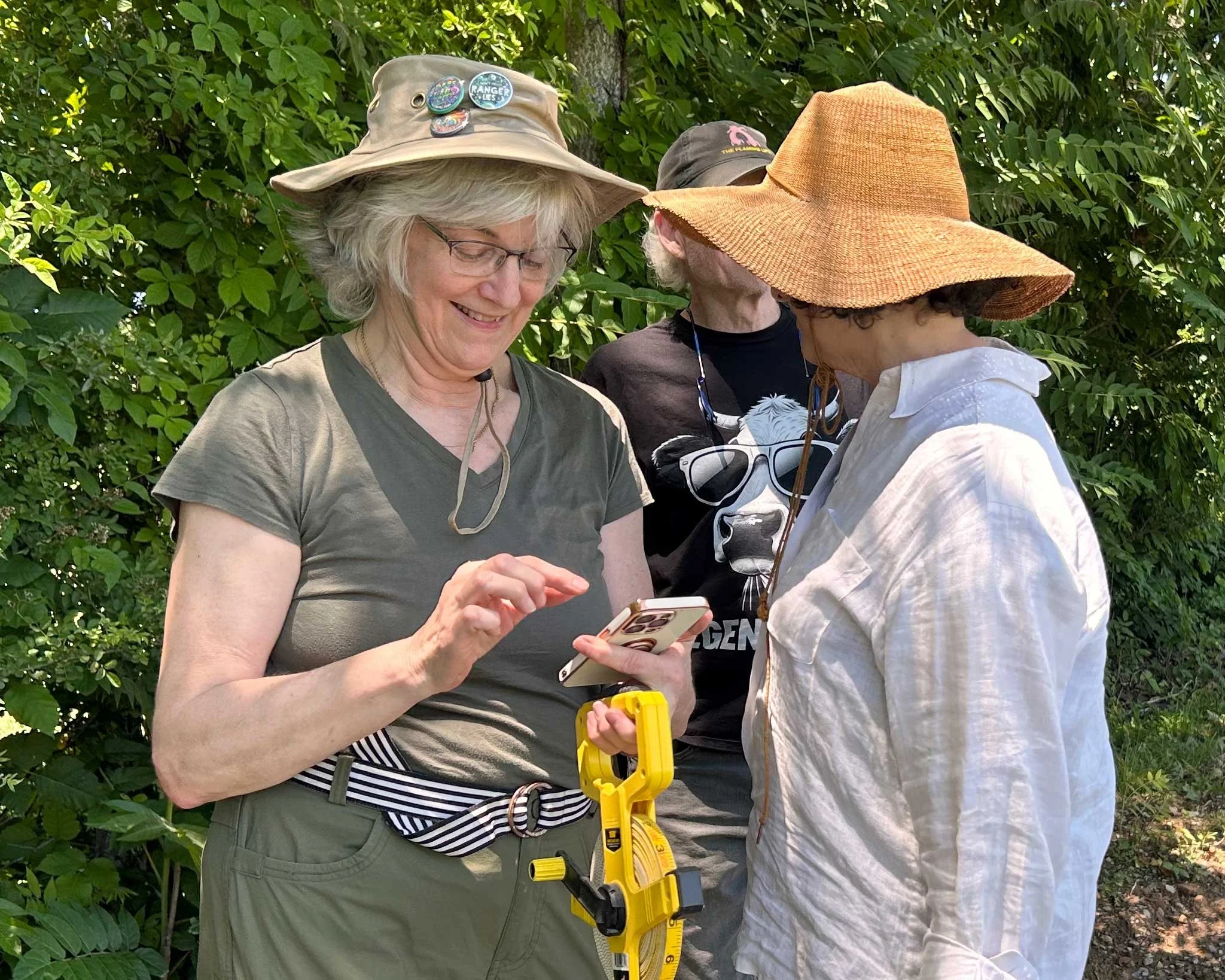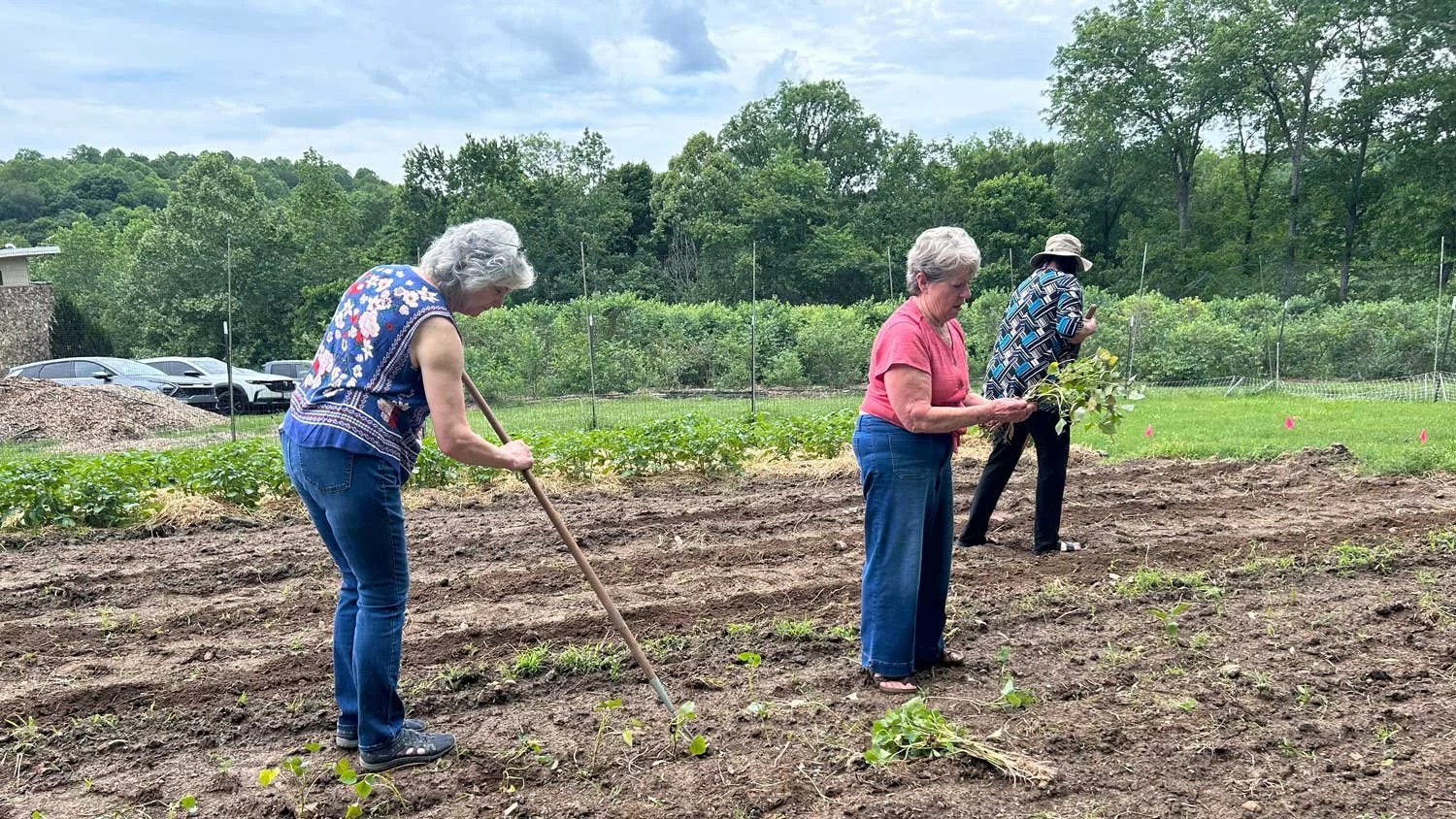How to Become a Member of Burns Village & Farm
If you’ve ever considered living in a place where neighbors know one another, meals are created together, and a farm is part of daily life, then Burns Village & Farm might feel like home. Located just outside of Nashville, this intentional community blends cohousing with a professionally run working farm, creating a lifestyle that’s sustainable, connected, and grounded in shared values.
If you’ve ever considered living in a place where neighbors know one another, meals are created together, and a farm is part of daily life, then Burns Village & Farm might feel like home. Located just outside of Nashville, this intentional community blends cohousing with a professionally run working farm, creating a lifestyle that’s sustainable, connected, and grounded in shared values.
So, how do you go from being curious about Burns Village & Farm to becoming a member? Here’s the step-by-step journey.
Step 1: Learn About Burns Village & Farm
The first step is simple: immerse yourself in the story of this community.
Start by exploring the website burnsvillagefarm.com. You’ll find videos where current members share why they joined, blog posts that dig into the benefits of cohousing, and resources that explain what makes an “agrihood” unique. You can follow members on social media on Facebook, Instagram and YouTube as well.
Want to go deeper? Visit cohousing.org, the national hub for cohousing communities across the U.S. There, you’ll find a wealth of information on how cohousing works, from decision-making models to design principles.
This research phase is about more than facts; it’s about resonance. Take your time to notice what feels exciting, what sparks curiosity, and whether you can imagine yourself being part of a village that’s designed for connection.
Step 2: Attend an Information Session, Lunch, or Site Tour
Once you’ve explored online, the best way to truly understand Burns Village & Farm is to connect with the people who are building it.
The community hosts virtual information sessions twice a month, where members walk you through the vision and answer your questions. There are also monthly site tours in Burns, TN , giving you the chance to see the land, meet members in person, and imagine what life could look like once homes are built.
Members offer informal meals and group conversations so you can experience firsthand what community feels like. These gatherings are no-pressure, offered as opportunities to learn and connect.
Step 3: Become an Explorer
If the vision speaks to you, the next step is becoming an Explorer.
Explorers are individuals or households who want a closer look before making the decision to join as members. For a one-time $150 fee, you’ll have up to 90 days of “insider access.” This includes:
Joining member and Explorer-only meetings
Reviewing plans, finances, and governance documents in a series of curated documents and meetings with members
Attending exclusive events
Asking as many questions as you need to feel clear and confident
Think of this phase as a trial run. It gives you time and space to understand how the community works and whether it’s the right fit for your lifestyle and long-term goals. Best of all, if you decide to become a member, your Explorer fee is applied toward your membership contribution.
Step 4: Become a Member
After your Explorer period, if Burns Village & Farm feels like home, you can officially join as a Member household.
Membership means:
Committing to purchase a home (2-bedroom flats and 3-bedroom townhomes (some with possibility of a 4th bedroom in a walk-out basement) are currently projected between $360,000 – $700,000).
Joining in governance, where decisions are made through a collaborative, modified consensus-based process that values every voice.
Participating in helping to form the community, from shaping the Common House to joining teams that keep the village growing.
The first homes are expected to be move-in ready in late 2027, with infrastructure work beginning in 2026. By the time you settle in, you’ll be stepping into a way of life that values connection, sustainability, and shared purpose and moving into a home you helped design.
Ready to Begin?
The process of becoming a member is about more than signing papers, it’s about becoming a part of a vision. Start by exploring the website, watching the videos, and learning from the resources. Then take the next step by joining a virtual information session or site tour, meet the people who are shaping this village, and see if the energy feels right.
If it does, become an Explorer. And from there, the door to full membership and to a new way of living, opens wide.
Join us for an event or become an explorer to discover how Burns Village & Farm is redefining modern living
Oct 2nd at 7:00 - 8:00 pm (CT)
October 12th at 2:00 - 3:30 pm
October 18th at 12:30 - 1:30
The Farm Brings Us Together
The founding members of Burns Village & Farm gathered beneath the wide, sheltering limbs of the Mother Oak for a shared potluck picnic on the future home site. Folding chairs circled. Paper plates filled with summer dishes and snacks. Conversations meandered from construction to compost, from personal stories to shared dreams.
Under the Mother Oak: Rooting Community in Shared Soil
Amid a weekend of conversations about design and decisions, one moment grounded everything, not in words or whiteboards, but in presence.
The founding members of Burns Village & Farm gathered beneath the wide, sheltering limbs of the Mother Oak for a shared potluck picnic on the future home site. Folding chairs circled. Paper plates filled with summer dishes and snacks. Conversations meandered from construction to compost, from personal stories to shared dreams.
Some brought family recipes. Others grabbed something en route. It didn’t matter. What mattered was the ritual: showing up with something to share, including food, warmth, ideas, and presence. For a few hours, the land held their laughter, their questions, and their quiet knowing: this is what we’re really building.
But this retreat wasn’t all reflection. It was also rigorous. Members walked the land together, talked through key site features, and moved through a full working agenda:
They explored green building standards with Joe Cooper.
Discussed the path forward with Sandy and John while naming what’s working, what’s unclear, and what comes next.
Showed appreciation for one another by exchanging heartfelt reflections and quiet gestures of support that deepened their sense of connection and community.
Ended the weekend with a formal check-out and a closing reflection on Burns Village & Farm, and its potential, its role, and how to honor it.
And yes, they planted together, not as farmers, but as future neighbors. The act of putting hands in soil was symbolic and a fun shared activity.
The farm will be led by a professional. But this land and this meal under the oak? That was the first layer of something real, a connection made deeper.
Have questions? Good. We’ve got time.
Become an Explorer to get personalized guidance, deeper insight into the process, and a front-row seat to how this community is coming to life, one real conversation at a time. More about becoming an Explorer
Join us for an event and discover how Burns Village & Farm is redefining modern living
August 6th at 7:00 - 8:00 pm (CT)
August 23rd at 12:30 - 1:30
August 17th at 2:00 - 3:30 pm
Big Decisions, Bold Conversations
Armed with markers, sticky dots, and a shared commitment to intentional living, the founding members worked through a wide-ranging list of topics, many of which had surfaced in prior meetings. These aren't hypothetical questions. They are questions about the agreements, plans, and design choices that will shape the community.
Designing a Village, Together
The BV&F retreat was about connection, and it was about making significant progress on decisions that will define daily life at Burns Village & Farm. Armed with markers, sticky dots, and a shared commitment to intentional living, the founding members worked through a wide-ranging list of topics, many of which had surfaced in prior meetings. These aren't hypothetical questions; they are questions about the agreements, plans, and design choices that will shape the community.
Here’s a snapshot of what was discussed:
Unit Mix + Unit Sizes: How to balance different needs and lifestyles through a variety of home sizes and layouts throughout Burns Village & Farm.
Covered Parking + EV Charging: Future-proofing the village by integrating electric vehicle charging and discussing the value of covered spots to protect cars.
Building Standards + a 3rd-Party Verifier: Ensuring consistent quality and accountability through clearly defined construction standards and possibly an independent verifier to guide us along the way.
Site Prep Plan: Coordinating timelines and responsibilities for grading, infrastructure, and utilities before construction begins.
Outbuildings: Determining the role of sheds and accessory buildings while weighing in on their usefulness and limitations.
Budget Review: Reviewing financials and exploring trade-offs to stay aligned with core priorities while managing costs.
Resale: Establishing guidelines to preserve the integrity and accessibility of the community over time.
Rental Policy + Investor Owners: Discussing owner-occupancy requirements and boundaries for rentals to avoid absentee ownership.
Landscaping Around Units: Clarifying who maintains what, and how landscaping reflects the community’s ecological goals.
Fencing (Common/Shared/Limited Common): Drawing lines between private and communal spaces while maintaining visual cohesion.
Personal Gardens: Supporting individual food or flower gardens without compromising shared land or views.
Lighting: Striking a balance between safety and preserving dark skies for stargazing and natural ambiance.
Dog Park + Pet Policy: Balancing pet-friendly ideals with noise, cleanliness, and shared enjoyment.
Acoustics: Ensuring units and shared spaces provide a sense of quiet and personal space.
Smoking Boundaries: Creating clear zones to maintain clean air and mutual comfort.
Gas Blowers + Electric Appliances: Considering bans on gas-powered tools and promoting quieter, cleaner electric alternatives.
Basements (Indoor vs. Outdoor Access): Evaluating the cost, functionality, and moisture risk of including basements, and how they might be accessed.
Use of Shared Equipment (e.g., lawnmowers: Drafting policies for how members may access and maintain community-owned tools.
Facilitation + Documentation: Affirming the need for structured facilitation and robust note-taking to support transparency, progress, and inclusion.
Join us for an event and discover how Burns Village & Farm is redefining modern living
August 6th at 7:00 - 8:00 pm (CT)
July 26th at 12:30 - 1:30
August 17th at 2:00 - 3:30 pm
From Zoom Calls to Dirt Under Fingernails: Founders Gather for a Working Retreat
Founding members of Burns Village & Farm gathered in person for a retreat, bringing their vision of a thriving cohousing community one step closer to reality. After many months of Zoom calls and planning sessions, the chance to connect face-to-face felt both grounding and energizing.
On May 17–18, the founding members of Burns Village & Farm gathered in person for a retreat, bringing their vision of a thriving cohousing community one step closer to reality. After many months of Zoom calls and planning sessions, the chance to connect face-to-face felt both grounding and energizing.
The group met at John and Rebecca’s home, where they spent time in nature, shared meals, and strengthened the relationships that will sustain this ambitious project. They held a potluck picnic under the “Mother Oak,” a powerful symbol of rootedness and resilience on the future village site.
One highlight? Getting their hands in the dirt, while planting for fun and connection.
As many of our followers know by now, Burns Village & Farm will have a professional farmer to lead the long-term cultivation, but this lighthearted gardening moment reminded everyone why the land matters.
Throughout the weekend, members spoke honestly about expectations, their shared aspirations, and made space for heart-to-heart conversations and ongoing reality checks.
This wasn’t just a retreat. It was a recalibration and a recommitment to building something extraordinary, together.
The village begins long before the homes are built.
We’ve documented this retreat to let those who are curious to see how the community will work. Sit in on a virtual session and see what it feels like to be part of something real, something rising from the ground up.
Join us for an event and discover how Burns Village & Farm is redefining modern living
July 9th at 7:00 - 8:00 pm (CT)
July 19th at 12:30 - 1:30
July 20th at 2:00 - 3:30 pm
Intentional Communities Resources
If you're exploring intentional communities, sustainable living, or alternative housing models, The Cohousing Association of the United States website has a comprehensive library of resources for you. This platform provides valuable insights into cohousing, ecovillages, and other forms of community living.
If you're exploring intentional communities, sustainable living, or alternative housing models, The Cohousing Association of the United States website has a comprehensive library of resources for you. This platform provides valuable insights into cohousing, ecovillages, and other forms of community living.
Here are three noteworthy books featured in their resource collection:
1. Pocket Neighborhoods: Creating Small-Scale Community in a Large-Scale World by Ross Chapin
Architect Ross Chapin introduces the concept of "pocket neighborhoods"—clusters of homes designed around shared spaces like courtyards or gardens. These designs aim to foster close-knit communities while maintaining individual privacy. The book showcases various examples, from historic models to contemporary developments, emphasizing the importance of design in promoting social interaction and sustainability. Read more
2. Cohousing: A Contemporary Approach to Housing Ourselves by Kathryn McCamant and Charles Durrett
This seminal work delves into the cohousing movement, detailing its origins in Denmark and its adaptation in North America. The authors provide case studies of existing communities, architectural plans, and practical advice on establishing and maintaining cohousing projects. The book serves as both an inspiration and a manual for those interested in collaborative living arrangements. Read more
3. Finding Community: How to Join an Ecovillage or Intentional Community by Diana Leafe Christian
Diana Leafe Christian offers a comprehensive guide for individuals seeking to join existing intentional communities. The book covers essential topics such as researching communities, understanding group dynamics, and evaluating whether a particular community aligns with one's values and lifestyle. It also addresses common challenges and provides strategies for successful integration. Read more
Join us for an event and discover how Burns Village & Farm is redefining modern living
July 9th at 7:00 - 8:00 pm (CT)
July 19th at 12:30 - 1:30
July 20th at 2:00 - 3:30 pm
Why Cohousing Isn’t Just Another HOA
When people first hear about Burns Village & Farm, they often ask, “Is this like a condo with an HOA?” It’s a fair question, and one we hear regularly during virtual info sessions and site visits. On the surface, cohousing might sound similar to a condominium setup: private homes, shared spaces, and a group of residents managing things together. But the similarities end there
What You Get in a Condominium HOA
In a typical condo, you own your individual unit, and everyone shares ownership of things like the lobby, pool, or elevator. A board of directors, usually a small group of elected residents, makes most decisions about maintenance, budgets, and community rules. Meetings might be held, but the board holds the final say.
Social interaction? It depends. Some buildings feel like a vertical village; others are more “pass by in the hallway” living. Community isn’t built into the structure, it just happens if you're lucky or very extroverted.
What You’ll Experience in Cohousing
Cohousing flips that script. Yes, you own your own home, but the design and governance are entirely different, by choice.
At Burns Village & Farm, homes will be clustered around shared green spaces to make casual connections a part of everyday life. And then there’s the heart of it all: the Common House. This is where neighbors cook and share meals, host movie nights, plan projects, and unwind together. It's not an amenity, it’s the pulse of the community.
Decision-making isn’t delegated to a board. It’s done together, by consensus. Everyone’s voice matters, and responsibilities are shared. It’s more participatory, more transparent, and more connected.
